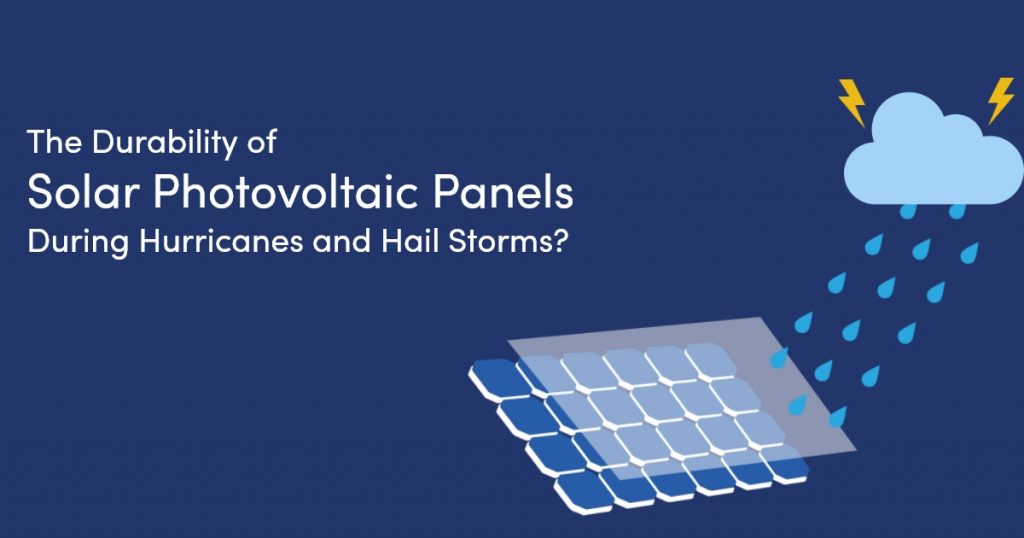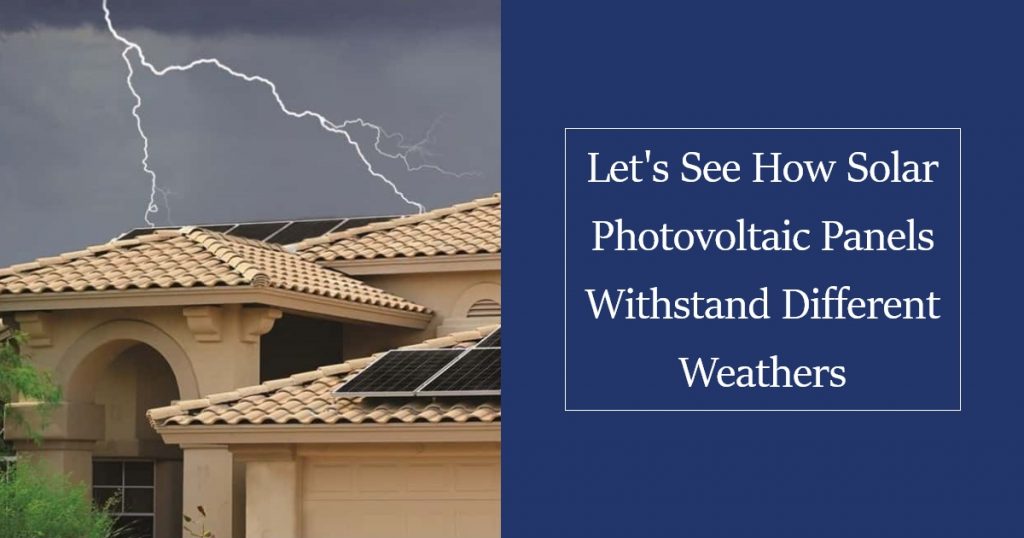The durability of Solar PV Photovoltaic Panels during Hurricanes and Hail Storms?

If you’re thinking about going solar or have already gone solar, you should consider how solar panel will charge in a region prone to cyclones and hailstorms. Therefore, the good news is that solar panels are far more durable than you might think.
Solar panels, like any other outdoor equipment, are susceptible to weather changes. Depend upon where you live, your solar panel systems is subject to heavy rain, high winds, or even hail. In this blog, we’ll look at how solar PV system fare in harsh weather.
What Exactly Are Solar Panels Made of?
Individual solar panel cells are typically made of silicon, which is a fragile material on its own. Aluminum, glass, and other valuable metals is use in rooftop solar panels. Moreover, while none of these materials appear to be tough enough on their own, when combined, they form an incredibly resistant and resilient surface. Just as a car is crash-tested before hitting the road; laboratory technicians thoroughly examine the most long-lasting solar panels. The engineers put these modules through rigorous testing to see how much damage they can withstand from falling or breaking. As a result, the risk of damage is reduce.
Here are the common parts of a solar panel:
- Silicon solar cells
- Metal frame (typically aluminum)
- Glass sheet for casing
- Standard 12V Wire
- Bus wire
- Plexiglas
Solar Panel Resilience Against Extreme Weather Conditions
Top solar panel manufacturers have long recognized the need for solar panels that can withstand extreme weather conditions such as high winds and hail. The majority of solar panel manufacturers test and certify their products to withstand hail up to one inch in diameter falling at 50 miles per hour.
Solar panels today are also extremely resistant to high winds and heavy rain. The majority of solar panel installations are designed to withstand hurricane-force winds. Furthermore, the aluminum and glass casings that house the solar cells on a solar panel are highly waterproof, even in heavy rain.
Also Read: – Do Solar Panels Work in the Winter Season in California?
Let’s See How Solar Photovoltaic Panels Withstand Different Weathers

Solar Photovoltaic Cells and Hail
Solar panel manufacturers put their panels and other products through rigorous testing to ensure that they will withstand a hail storm. Most panels is test to withstand hail up to 25mm; or one inch, falling at 23 meters per second. (Around 50 miles per hour) Solar Photovoltaic PV cells perform admirably in hail.
Solar Panels in storms
Precipitation is a often overlook aspect of severe weather. However, even in the heaviest rains and snows, your solar panels should perform admirably. Therefore, Solar panels is completely waterproof and is design to last for decades outside; even in the face of numerous showers and storms.
The solar cells and electrical components inside is protect by; a glass sheet on the front and a tough back sheet. In the unlikely event that water does get in, the manufacturer’s warranty will most likely cover it.
How Do Solar Panel Endure High Winds?
The rooftop solar system is one of the most important solar power residential system components in our opinion. Typically, more than 6-inches of space is left between the base of the solar panel; and the surface of the roof, making the panel highly aerodynamic. Hence, as a result, the rooftop solar panels can withstand strong winds without producing excessive uplift.
Even if the wind is blowing strongly, industrial power bolts can keep the racking system anchored to the roof by anchoring the solar modules. The installer’s proper anchoring of the aerodynamic solar system ensures that the solar panel systems modules will outlast any extreme storm on top.
Lightning Strikes and Solar Panels
Accordingly, Lightning causes thunder, so all thunderstorms have lightning. In addition, lightning can cause significant damage to your solar PV panel systems. A lightning strike can result in lost production and the need for repairs and replacements if your system is not properly protected. The severity of your solar system’s damage will depend on how direct the strike is. If a lightning bolt strikes your system directly, it has the potential to melt the panels or inverter. Fortunately, direct hits are uncommon.
Conclusion –
The solar panels are not invincible, they have demonstrated their robust storm after storm, from southeasterly hurricanes to Rocky Mountain hailstorms. To ensure a decades-long solar investment, partners with an experienced and renowned contractor who uses quality parts. If you are planning to go solar there are amazing solar panel installers in California, you should check out.
7 Top Reasons to Install Photovoltaics in Industrial Areas
August 2, 2021 at 4:28 am[…] Also Read: – The durability of Solar PV Photovoltaic Panels during Hurricanes and Hail Storms? […]